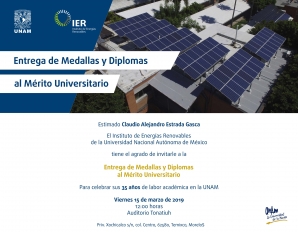Mostrando artículos por etiqueta: Journal of Photochemistry and Photobiology
Enhanced mineralization of atrazine by means of photodegradationprocesses using solar energy at pilot plant scale
Carlos Antonio Pineda Arellano, A. Jiménez González, Susana Silva Martínez, Iván Salgado-Tránsito, Cesar Pérez Franco
Abstract
Atrazine is a highly persistent and carcinogenic compound used as herbicide around the world. This compound has been banned in USA and some European countries but in Mexico it is still widely used in the agriculture. In order to achieve a high mineralization of atrazine, present as active compound in the Gesaprim commercial herbicide, detoxification studies in two-compound parabolic solar reactors by means of photo-Fenton process followed by TiO2 photocatalysis was carried out. The atrazine contents in the Gesaprim solutions tested were 35 mg L−1 (19.0 mg L−1 of TOC) and 20 mg L−1 (9.5 mg L−1 of TOC). [H2O2]0/COD0 ratios of 1, 3 and 5 (1.5 × 10−3, 4.5 × 10−3 and 7.5 × 10−3 mol L−1 H2O2, respectively) were evaluated in combination with 5 mg L−1 and 10 mg L−1 Fe2+ at pH 2.8 in the photo-Fenton oxidation; whereas, in the photocatalytic process, the influence of the pH (4.8, 7.0 and 11.0) and type of TiO2 (Degussa P25 and HB) were studied with TiO2 content of 200 mg L−1. The study showed that photo-Fenton process followed by TiO2 photocatalysis produce a 72% of mineralization (for an initial TOC of 19 mg L−1) and decrease above 90% of toxicity in compliance with NMX-AA-110-1995-SCFI1 Mexican Norm. In order to established a minimum amount of chemical reagents these photodegradation processes were carried out with special emphasis on the optimization of experimental parameters such as concentrations of photocatalyst and oxidant. Atrazine mineralization was influenced by the pH of the solution, the initial concentration of hydrogen peroxide and iron ions.

